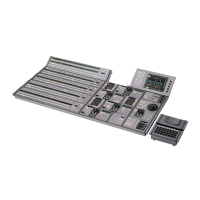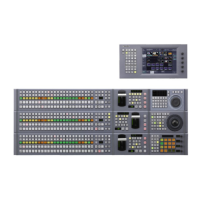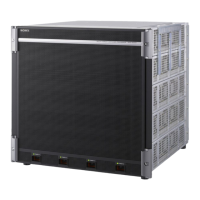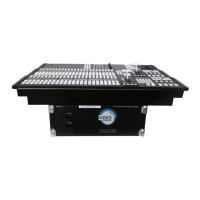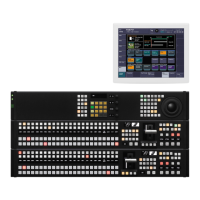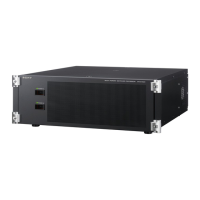Names and Functions of Parts of the Control Panel 69
Next transition changes the background.
KEY1 to
KEY8
(DSK1 to
DSK8 in the
PGM/PST
bank)
• Press this button, turning it on, to make the
next transition insert or remove the
corresponding key (keys 1 to 8).
• If a key is currently inserted it will be
removed, and if it is not currently inserted, it
will be inserted.
• In the PGM/PST bank, this inserts or
removes downstream keys 1 to 8.
For details of assignment and selection of
keys 5 to 8, see the “Assigning Buttons for
Selection of Keys 5 to 8 in the Setup Menu”
(page 397) and ““Selecting Keys 5 to 8 for
Next Transition” (page 398).
• When this button is lit, the setting of the key
priority after the next transition is enabled.
• The key priority after the next transition
appears in the key status display.
• Pressing this button turns on a preselected
set of the [BKGD], [KEY1] to [KEY8], and
[KEY PRIOR] buttons.
• Make this setting in the Setup menu.
Chapter
2
Menus
and
Control
Panel
2
Transition type selection buttons
6
Key status display
1
Next transition selection
buttons
7
PRIOR SET button
4
Wipe direction selection
buttons
3
Transition execution
section
8
Independent key
transition execution
section
5
TRANS PVW button
a
Next transition selection buttons
Press these buttons, turning them on, to determine what the
next transition will apply to.
b
Transition type selection buttons
You can assign these buttons in setup to any transition
type.
For details, see “Setting Transition Control Block Button
Assignments” in Chapter 19 (Volume 2).
Press one of these buttons, turning it on, to determine the
type of the next transition (see page 95).
When multi-program mode is selected in the Setup menu,
two or more of the following buttons may light.
For details, see “Settings for Switcher Configuration
(Config Menu)” in Chapter 20 (Volume 2).
You can also assign a function to these buttons to select
whether or not the fader levers are used as keyframe
faders.
In a background transition, the new video
fades in as the current video fades out.
The current and new video signals are
compared, and the signal with the higher
luminance level is given priority in the output.
The current video is maintained at 100%
output for the first half of the transition as the
new video is mixed while increasing
progressively to 100%.
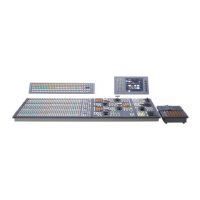
